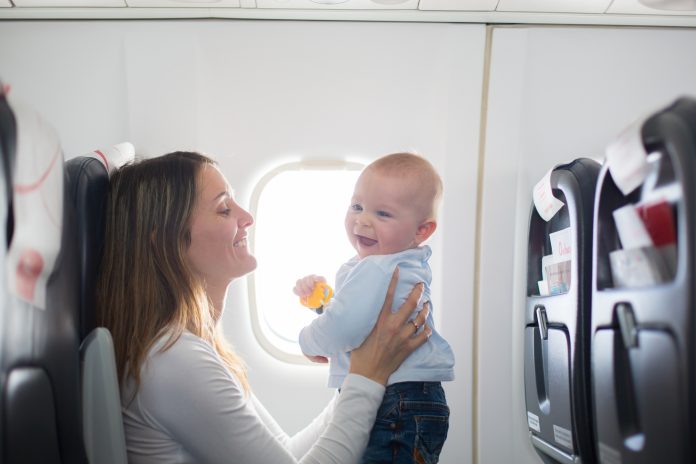Did you know that the odds of dying in a car accident are about 1 in 98, while the odds of dying in an air accident are about 1 in 7,178? When planning a trip, many people wonder, “Is flying safer than driving?” In this article, we will compare the safety of air and road travel using various metrics, explore the factors that affect their safety, and provide tips for staying safe during your journey.
Understanding Risk and Safety Metrics
When we talk about safety in transportation, we are considering the chances of accidents or injuries happening during a trip. To understand which mode of transportation is safer, we need to look at various metrics that help us measure risk and safety. These metrics are like tools to help us compare the safety of flying and driving.
Common Metrics for Measuring Risk and Safety
There are several ways to measure safety in transportation. Here are three important metrics that we can use:
Fatalities per Billion Passenger Miles
This metric tells us how many people die for every billion miles traveled by passengers. It helps us compare safety between different modes of transportation by considering the distance traveled.
Fatalities per Million Hours
This metric tells us how many people die for every million hours spent traveling. It helps us understand safety in terms of the time spent on a journey.
Accident Rates
This metric tells us the number of accidents that happen in a specific time frame, like a year. It helps us understand how often accidents happen.
Comparing Air and Road Safety Statistics
Now that we know the metrics to compare safety, let’s look at the data for both air and road travel. This will help us understand which mode of transportation is safer.
Aviation Safety Data
Air travel can be divided into two categories: commercial aviation and general aviation. Commercial aviation includes large airlines and scheduled flights, while general aviation covers smaller planes and private flights.
In recent years, commercial aviation has seen a significant improvement in safety. Thanks to better technology, stricter regulations, and well-trained pilots, the number of accidents and fatalities has dropped. In fact, the fatalities per billion passenger miles for commercial aviation are very low, making it one of the safest ways to travel.
General aviation has a higher accident rate than commercial aviation, but it still has a lower number of fatalities per billion passenger miles than car travel. This means that even though accidents happen more often in general aviation, they are still less deadly than car accidents.
Road Safety Data
Road travel includes cars, motorcycles, and other vehicles that use roads. Let’s look at the data to understand the safety of road travel.
Car crash statistics show that the number of accidents and fatalities on the road is much higher than in air travel. The fatalities per billion passenger miles for car travel are higher than for both commercial and general aviation. This means that the chances of dying in a car accident are greater than in an air accident.
Motorcycles and other road vehicles have even higher accident rates and fatalities per billion passenger miles than cars. This means that traveling by motorcycle or other road vehicles can be more dangerous than both car and air travel.
Comparing Air and Road Safety
Based on the metrics we discussed earlier, we can see that air travel, especially commercial aviation, is much safer than road travel. The number of fatalities per billion passenger miles is significantly lower for air travel than for cars, motorcycles, and other road vehicles. This data helps us understand that flying is generally safer than driving.
However, it’s essential to keep in mind that no mode of transportation is risk-free. Taking personal responsibility to stay safe during your travels is crucial. If you or someone you know has been involved in a car accident, you may find helpful resources on this page on accident attorneys.
Factors Affecting Safety in Air and Road Travel
When comparing the safety of car travel and air travel, it’s important to understand the factors that contribute to safety in both modes of transportation. By knowing these factors, we can make better choices when planning our trips.
Factors Contributing to Air Travel Safety
Air travel is considered safe for many reasons. Some of the key factors that make flying safer than driving are:
Strict Regulations and Oversight
Airlines and pilots must follow many rules and guidelines set by government agencies. These rules help make sure that planes are well-maintained, pilots are well-trained, and flights are operated safely.
Advances in Aircraft Technology and Design
Airplanes are designed with safety in mind. Over the years, engineers have developed new technologies and designs that help prevent accidents and make flights safer. For example, planes now have better navigation systems, which help pilots avoid bad weather and other dangers.
Professional and Highly Trained Pilots
Pilots who fly commercial planes must go through a lot of training and pass many tests before they can fly. This training helps them learn how to handle different situations and make the right decisions during a flight.
Factors Contributing to Road Travel Risks
Car travel, on the other hand, has more risks than air travel. Some of the factors that make driving more dangerous than flying are:
Human Error and Reckless Driving
One of the biggest reasons for car accidents is human error. People sometimes make mistakes while driving, like not paying attention to the road or driving too fast. These mistakes can lead to accidents and injuries.
Varying Road Conditions and Weather
Roads can be affected by many things, like bad weather, construction, or traffic. These factors can make driving more dangerous and increase the chances of accidents. Air travel, on the other hand, is less affected by these factors because planes can fly above bad weather and avoid other dangers.
Lack of Standardized Regulations and Enforcement
While there are rules for driving, they are not always followed or enforced as strictly as the rules for air travel. This means that some people might drive without a license, use their phone while driving, or break other rules. These behaviors can make car travel more dangerous for everyone on the road.
Is Flying Safer Than Driving?
So, is flying safer than driving? Air travel, especially commercial aviation, is statistically safer than driving. However, personal responsibility plays a vital role in ensuring safety during any trip.
Be aware of the factors that contribute to the safety of both car travel and air travel and always make informed decisions when planning your journey. To learn more about safe travel practices and explore other travel-related topics, visit our Travel section.

